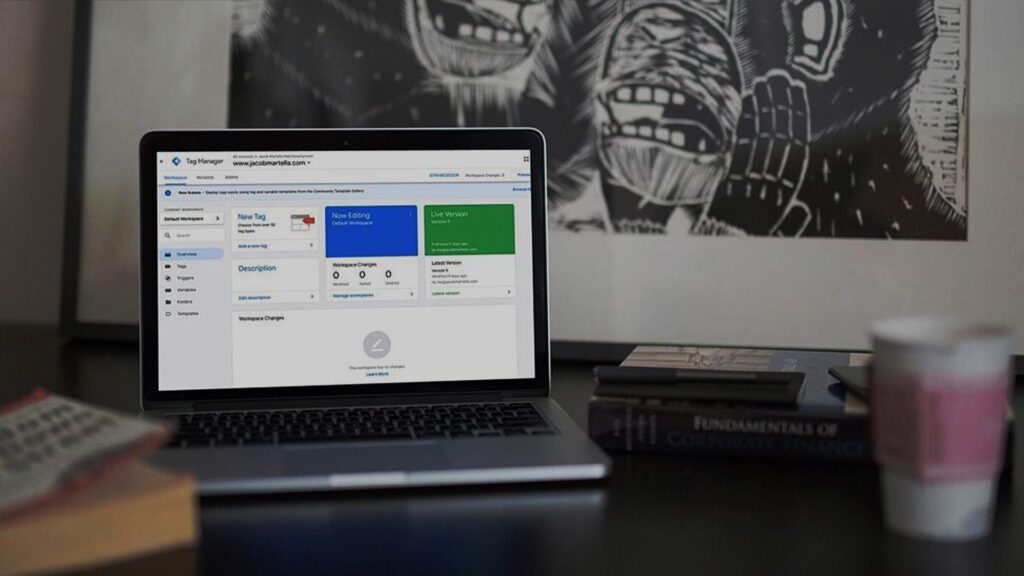For decision – making only 37 % of marketers use marketing analytics. Further, 35 % of marketers feel that they can quantify the impact of marketing efforts. A degree of sense prevails as analytics and data are hard to comprehend. The choice of tools, verifying numbers and their implementation requires a large team with specialized skills.
A lot of opportunities exist, and Google Tag manager best practices are going to make your life better.

The definition of Google Tag Manager
Google launched Google tag manager in 2012, enabling marketers to interpret user behavior and gain insights into the performance without entering any code. Google tag manager is a tool that should be used in conjunction with Google Analytics and not as a replacement for it. In simple terms, it serves as a house and command centre for all your tracking needs.
Rather than editing the website code, if you wanted to measure something that would contain only Google Analytics. Datalayer provide an opportunity to track from the tool, and the data is sent to Google Analytics for interpretation.
Popular Google tag manager best practices to follow
After the creation of a GTM account and a few tags, let us understand GTM best practices that will make your life easier. An overview of them is as follows
Workspaces
If there are multiple users working in GTM, the workspace makes it easy to work on something without even touching what the other users are doing. Workspaces are a great choice for companies with multiple departments, or for companies working with various agencies or on different projects.
Preview of work
Often you may publish an ad to realize that there is a misspelling in the ad copy. With the preview feature of GTM, you can screen the ad in real-time, which is on the page where the tag should be firing. Then you can determine what is working and what is not before you publish your new tags.
Version
A version is created every time you publish a change to the container. This is going to help a user create a history of changes in GTM. It provides insights when the changes were made, by whom and when.
Imagine you notice that something has horribly gone wrong, and a tag is broken somewhere. You may be able to refurbish a few previous versions of the GTM. When you visit the previous versions of GTM, you will be able to witness when the last version was created and published.
In-built third-party tags
If you are new to GTM, the in-built third-party tags may turn out to be a lifeline for you. Third-party tags require less coding experience and allow the less technical users to be active in GTM. The tags are deployed quickly, and errors are less likely to emerge.
In-built tags include Google properties like Google Analytics, Google Ads etc.

For website pages specifying triggers
You want to create a trigger for a visit to your Thank you page. Under the trigger type, you need to click on the Page view. The trigger needs to have a new name. Thank you, page, or another simple way to describe it. You can use them for various campaigns or have separate thank you pages.
Choose some page views as it is one of the viable Google Tag Manager best practices to follow. It is one of the sure-shot ways to instigate your conversions without meaning to. Beyond that, you will choose the conditions when an event occurs. The first dropdown has a number of variables to choose from. The second dropdown specifies the reference, and the third defines the URL.
Event tracking
The event track is a specific area where GTM can showcase their true worth. Before their emergence, if you wanted to track events like video plays and Google clicks, you would have a developer code addressing the tracking code of each. The real value of GTM is seen when you have a series of bulk codes to add.
Event tracking is extraordinary! How many times has a client clicked on a link or a video button, and you were not sure? Event tracking is going to be the new buzzword. Before you plan to start, you want to make sure that the tag confirmation is formulated for the built-in variables, pages, forums along with triggers down the line.
Scroll tracking
Have you ever wondered why all the content that is created at your end is grabbing eyeballs? Tools like Hotjar can be used to provide heat maps. Though it is all about GTM, a solution exists. To get started, you need to create a trigger and name it something like DOM ready, which means that once it is ready, the scroll depth tag will fire.
DOM is referred to as a document Object model. For our purposes, it is better to consider it as an entire HTML page. Every time an HTML or DOM finishes loading, the browser will fire a trigger that is DOM-ready.
JavaScript errors can be tracked as GA goals.
Most marketers are familiar with the creation of goals in GA. This makes it easier to monitor successful conversions, such as purchases of free sign-ins. You can track the negative goals and errors of JavaScript to fall into that category.
Setting up a goal can assist you in recognising when a JavaScript error occurs, allowing you to rapidly address the issue.
Have you ever gone on to send an email to your IT department only to tell them to disregard your last request? At this juncture, you will be fully empowered to track what you need to start experimenting and tracking ROI.
Google Tag Manager enable us to cash in on the power of Google Analytics paving for navigation tracking code on the websites and allows us to be efficient with our time. It prioritizes what our IT and development teams may require so that they focus on matters that are important.
For more such blogs, Connect with GTECH.
Related Post
Publications, Insights & News from GTECH







